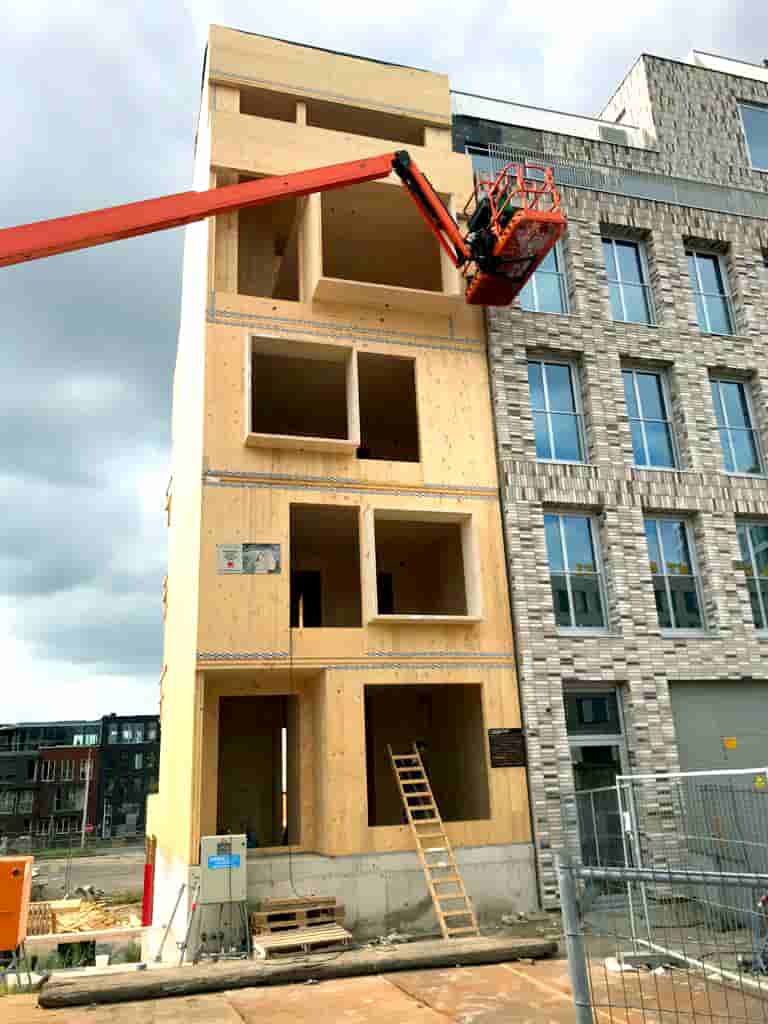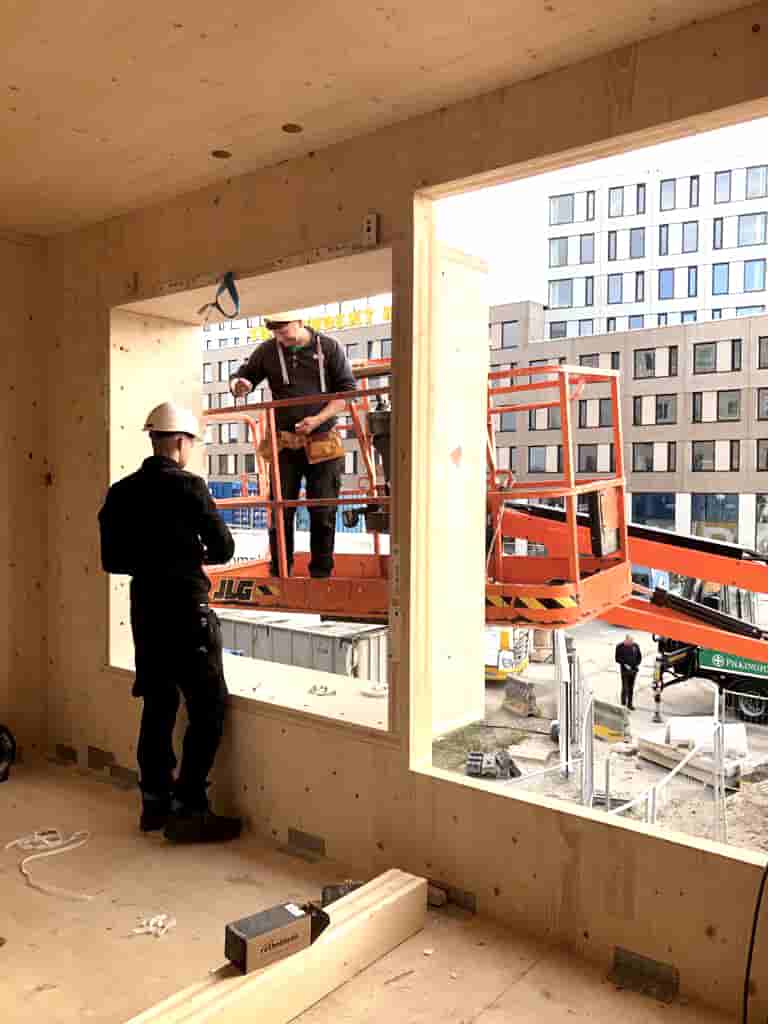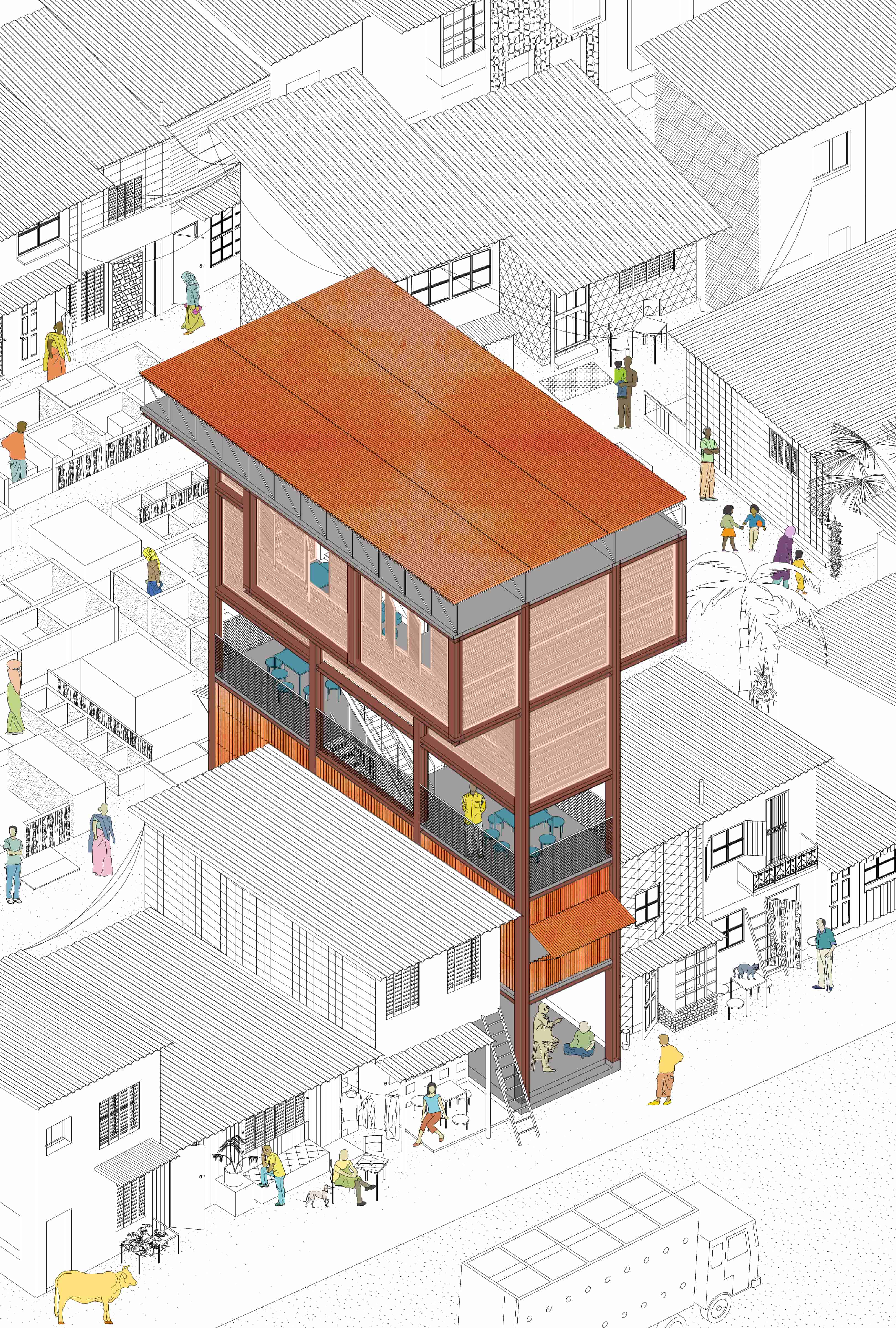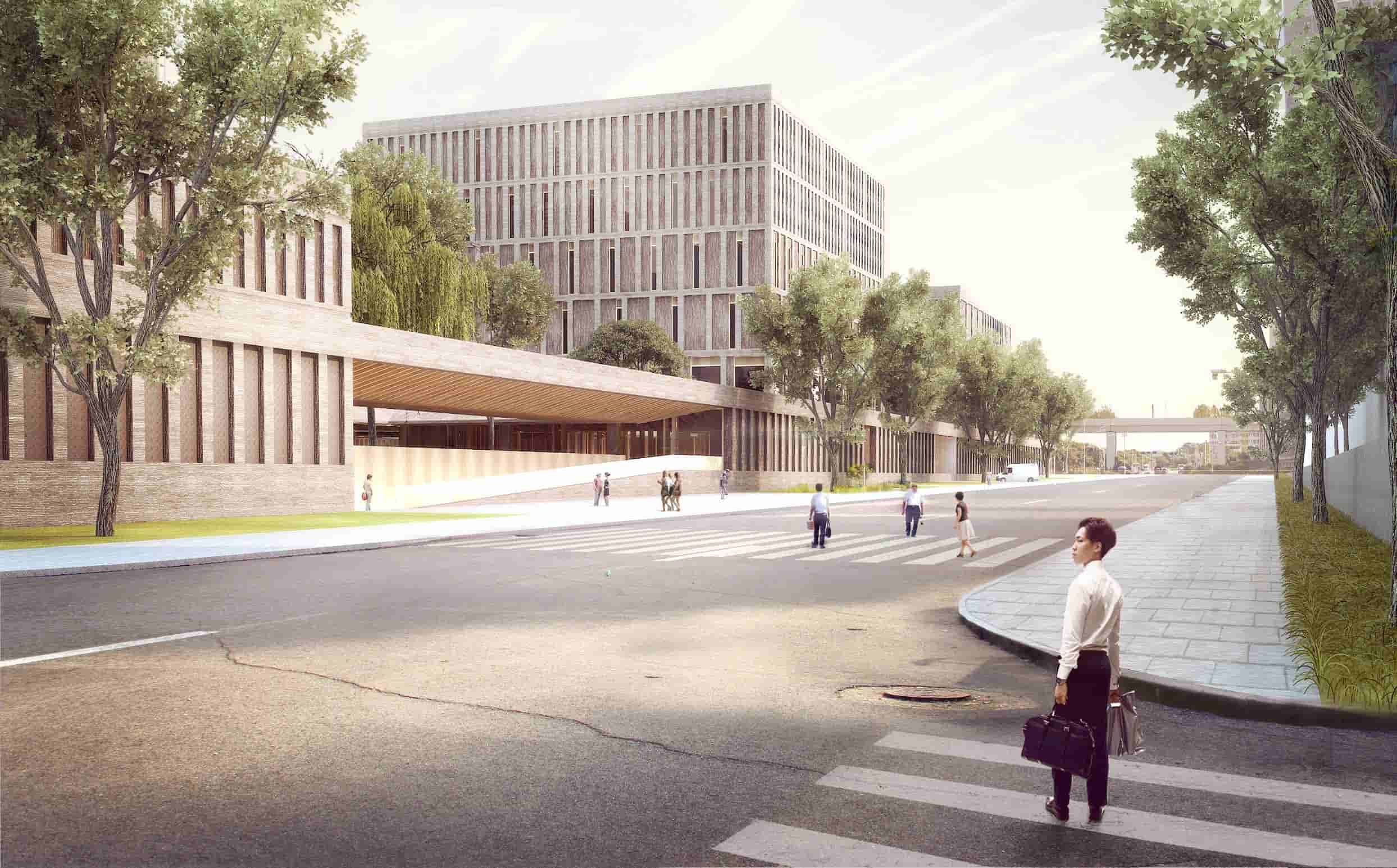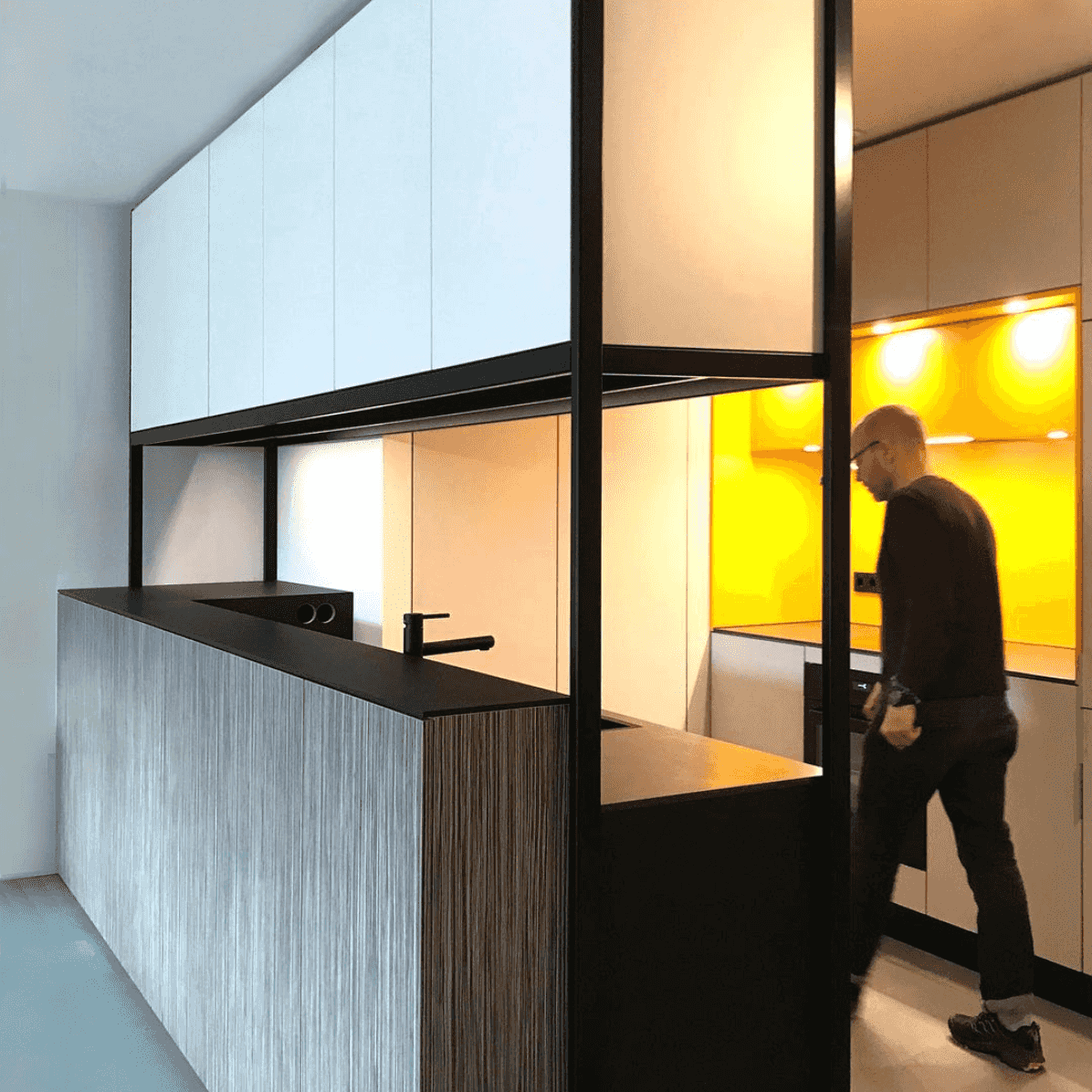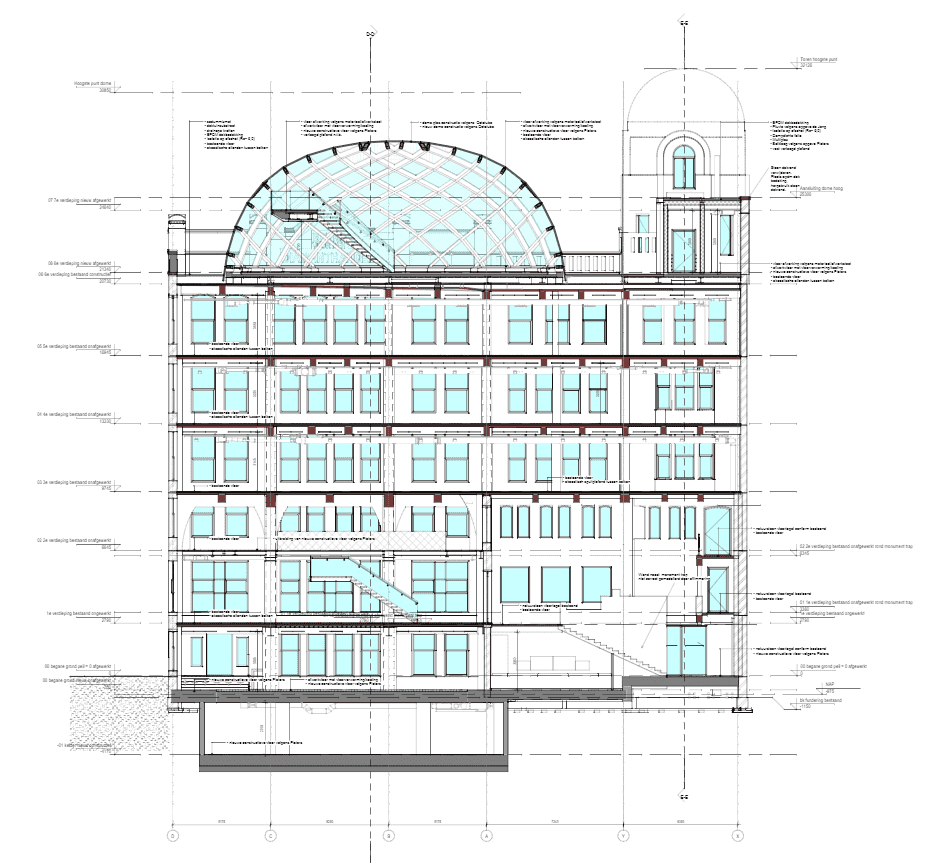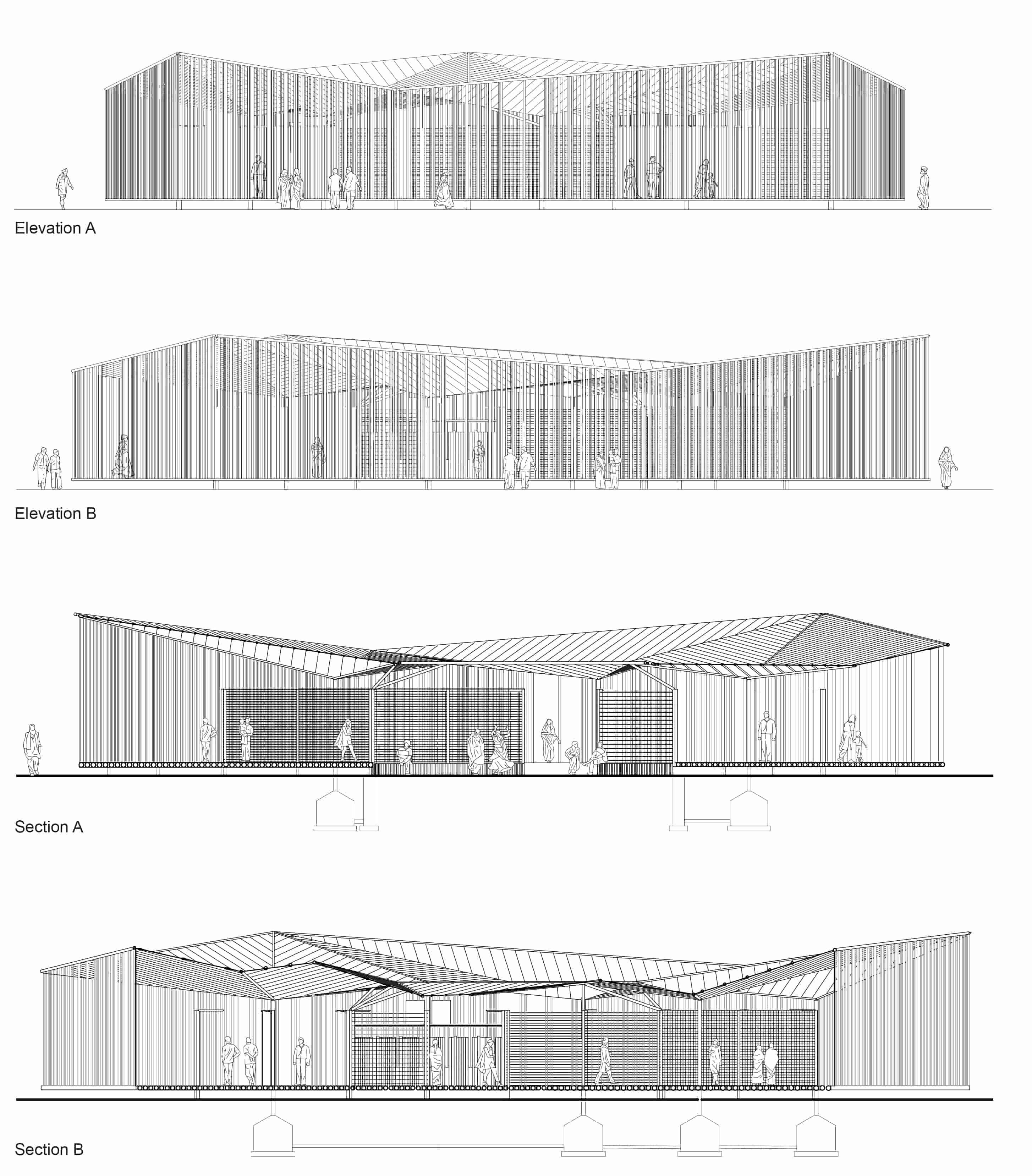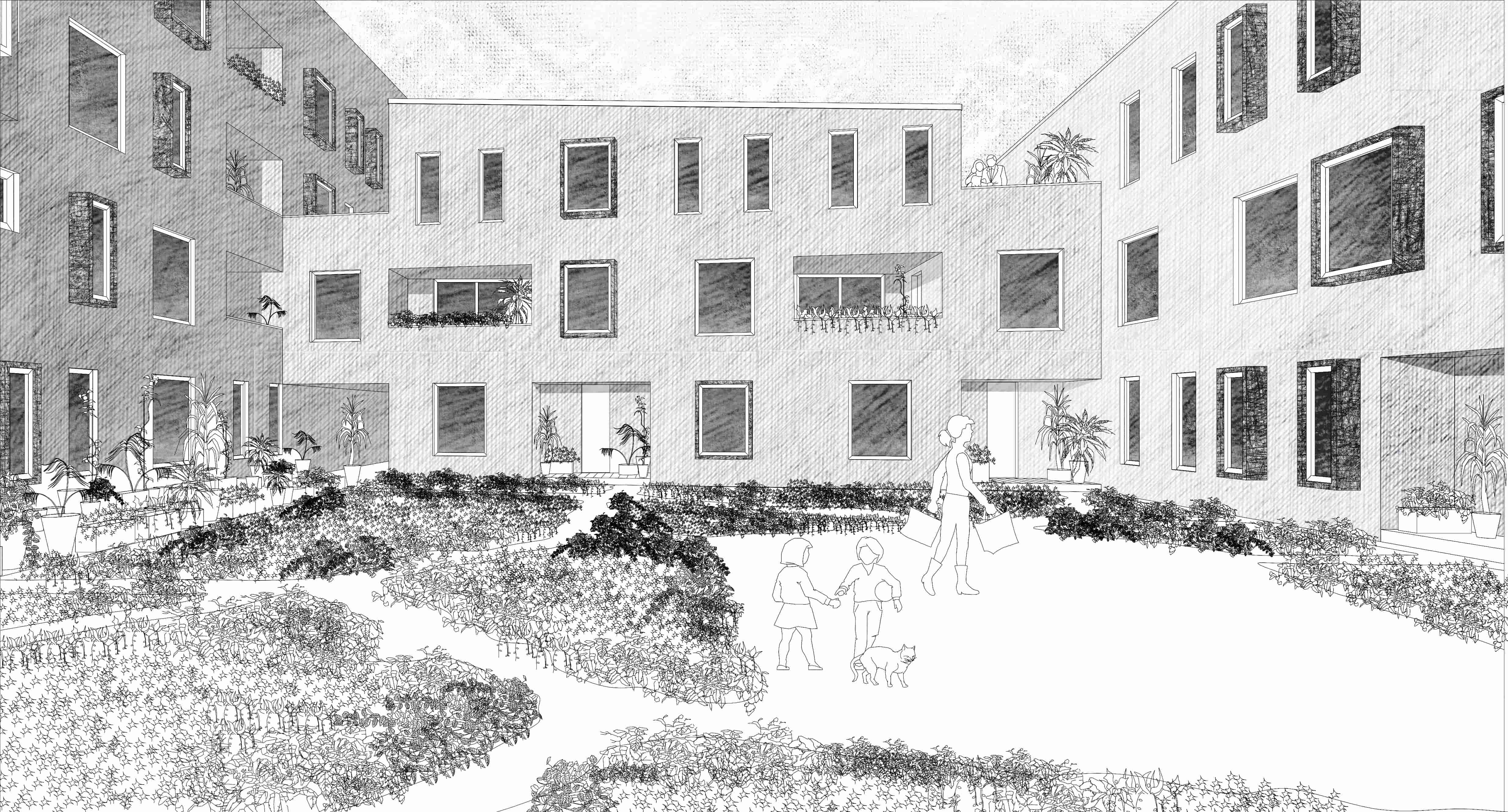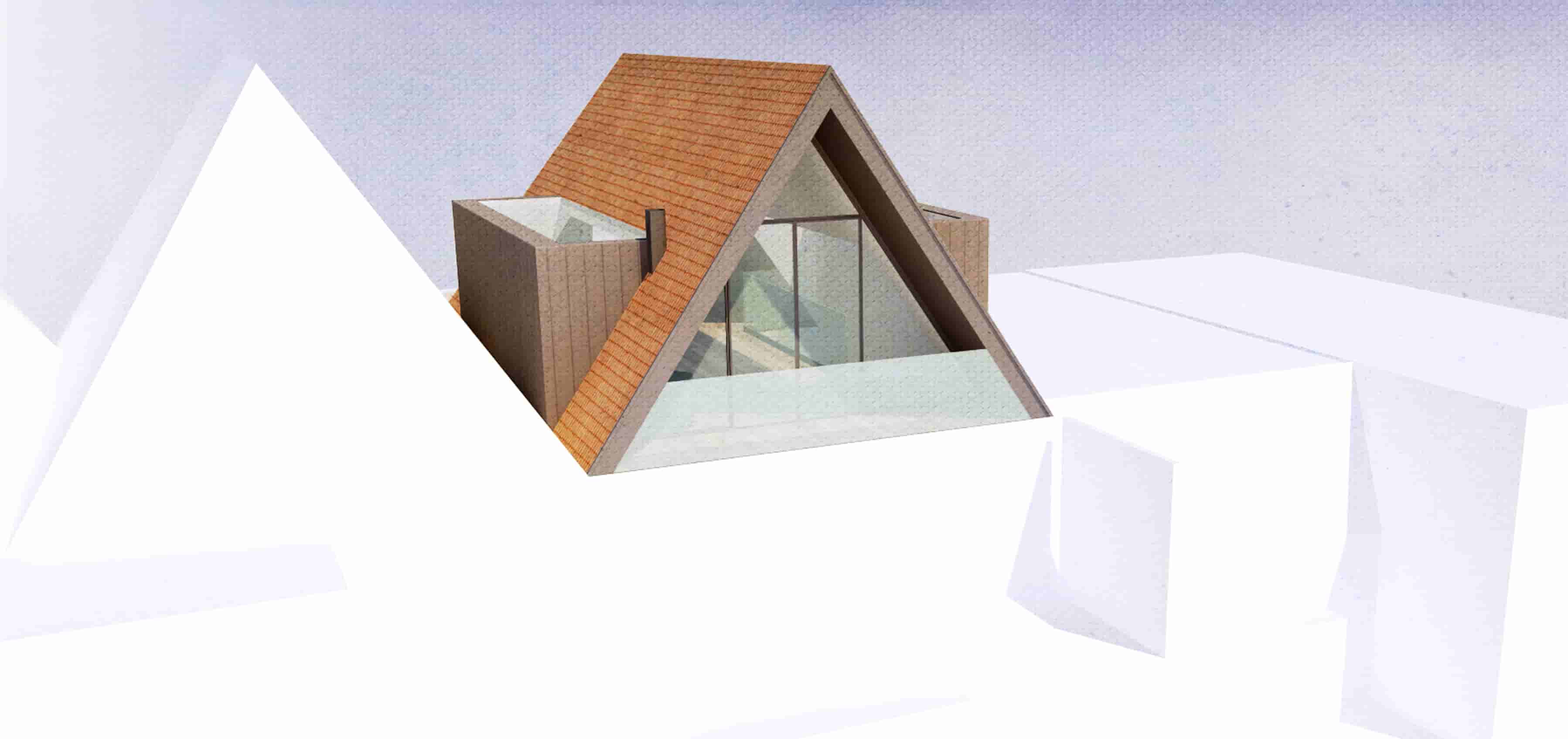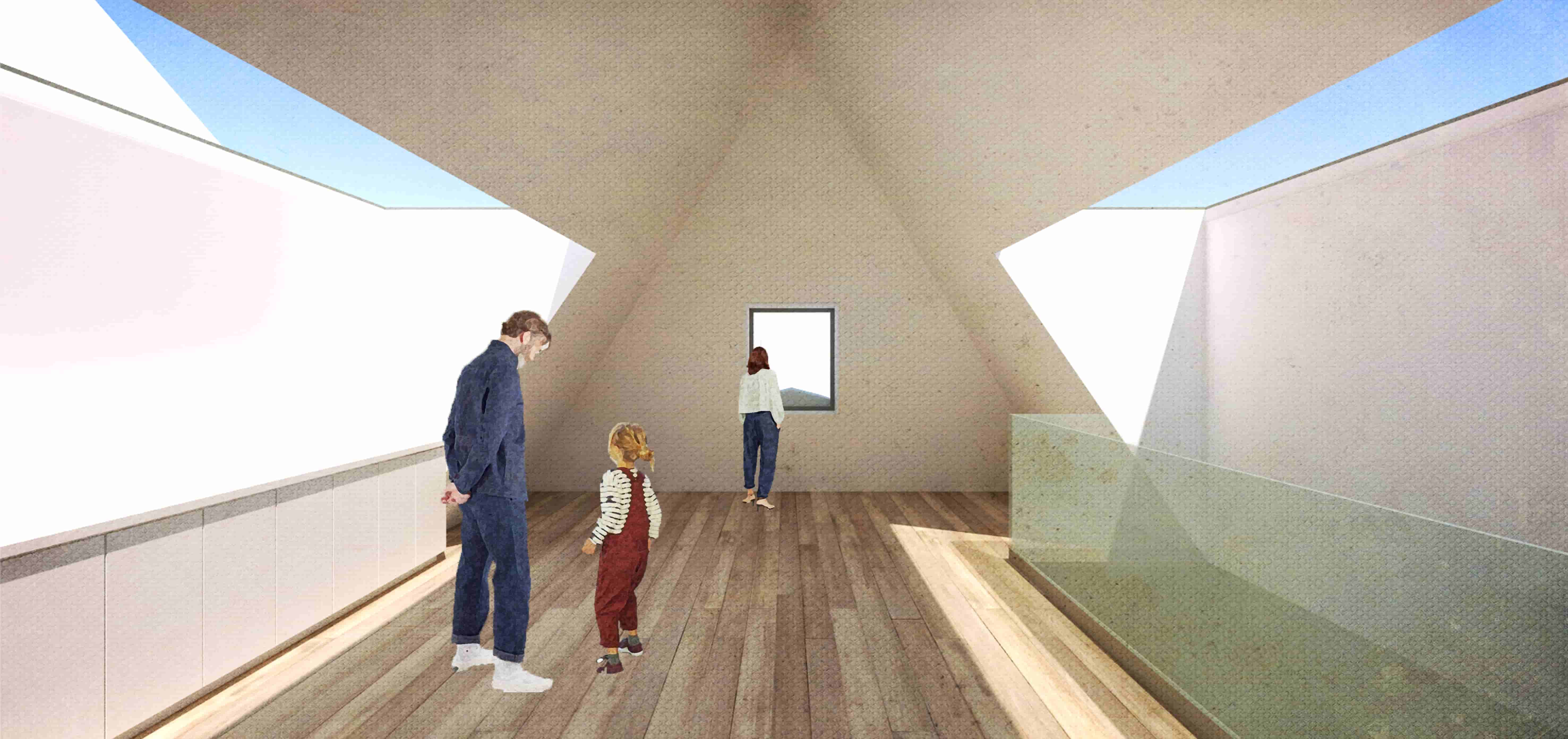Kavel 9
Year: 2019-2020
Type: private commission
Location: Delft, The Netherlands
In collaboration with:Rohan Varma, Gonzalo Zylberman
Kavel 09 is a single-family house that is currently under construction as part of a larger mixed-use urban renewal project located in the centre of Delft. To maximise daylight as well as the narrow frontage of the plot, the design takes the formof three successive bays. In this configuration, titlethe central inner bay serves as the service zone accommodating the elevator shaft, stairwell and bathrooms. The two outer bays at either end contain living and sleeping zones with bay windows of various sizes that offer sweeping views of the park and historic city centre of Delft.
Responding to the needs of the client, the house rises six floors with an layout that allows for ample space for a home office on the lower two levels, private studios on the first floor and more private bedrooms and living spaces on the upper three floors. An open-to-sky terrace with a heated swimming pool top the 351 sqm project.
Two other aspects guided the design of the project: a desire to combine centuries-old local building materials such as brick with twenty-first-century sustainable materials through the use of cross- laminated timber (CLT).
The project was designed and constructed in less than 18 months and which responds to the climate and culture of building in Delft with the aspirations of a young expat family eager to make a home for their growing family.






